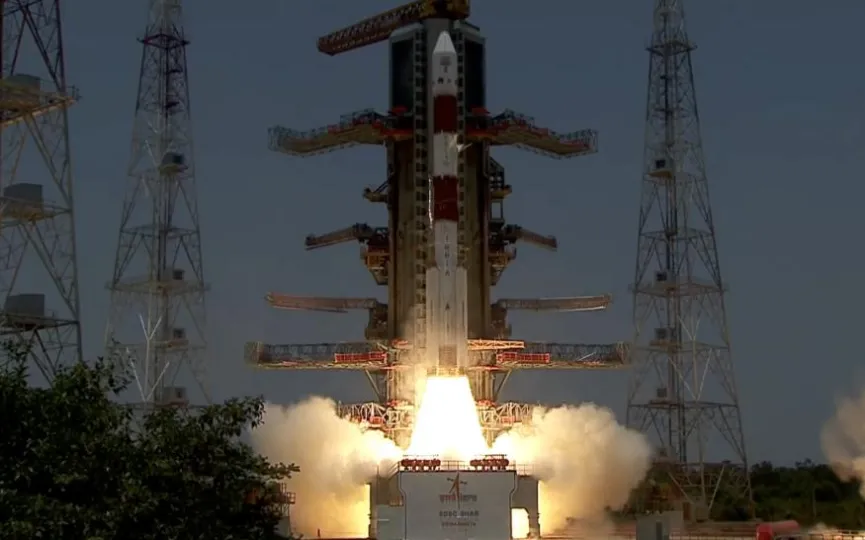India Sends Probe to Study Sun After Successful Moon Landing
According to a government official, Indian Prime Minister Narendra Modi aims to replicate India’s success in the IT industry by focusing on space. The recent endeavors of the Indian Space Research Organisation demonstrate the country’s genuine commitment to establishing itself as a significant player in the field. Shortly after the successful landing of Chandrayaan-3 on the moon, the space agency swiftly launched a rocket carrying Aditya-L1, India’s inaugural mission solely dedicated to observing the sun.
Aditya-L1 will travel 930,000 miles over four months until it reaches the L1 Lagrange Point between the Sun and our planet. The Lagrange point is a point of balance between two massive orbiting bodies where the objects tend to stay still, minimizing the spacecraft’s fuel consumption. The spacecraft will remain in orbit to gather data that scientists hope will help them figure out why the sun’s corona is hotter than its surface.
They also hope that the mission could provide information on how solar radiation and various solar phenomena affect communication systems and satellites as well as power grids. By understanding these effects, space companies and agencies can better protect satellites in orbit. If scientists can predict a coronal mass eruption, for example, they can warn operators so they can shut down their satellites before the phenomenon occurs. In addition, researchers hope that Aditya-L1 can shed light on the behavior of the solar wind and how solar activity can affect Earth’s climate in the long term.
Sankar Subramanian, principal investigator of the mission, said: “We have ensured that we have a unique data set not currently available from any other mission. This will allow us to understand the Sun, its dynamics and the inner heliosphere, which is an important part of modern technology and space- weather aspects.”
India already has several other missions in the coming years. It is working with Japan to send an unmanned lander and rover to explore the South Pole region of the Moon by 2025. Before that, by next year, it plans to launch into orbit to observe Mars and Venus.




